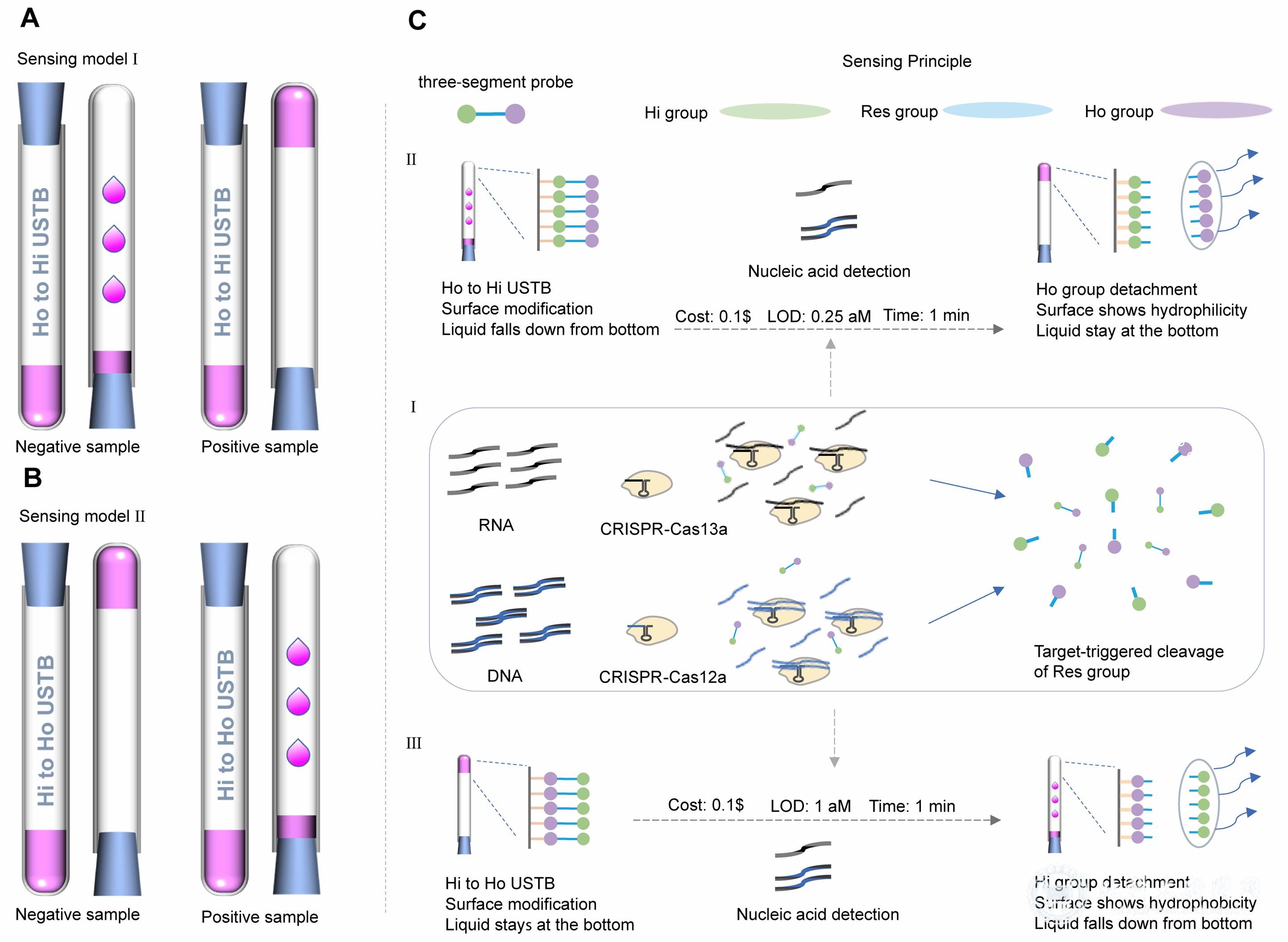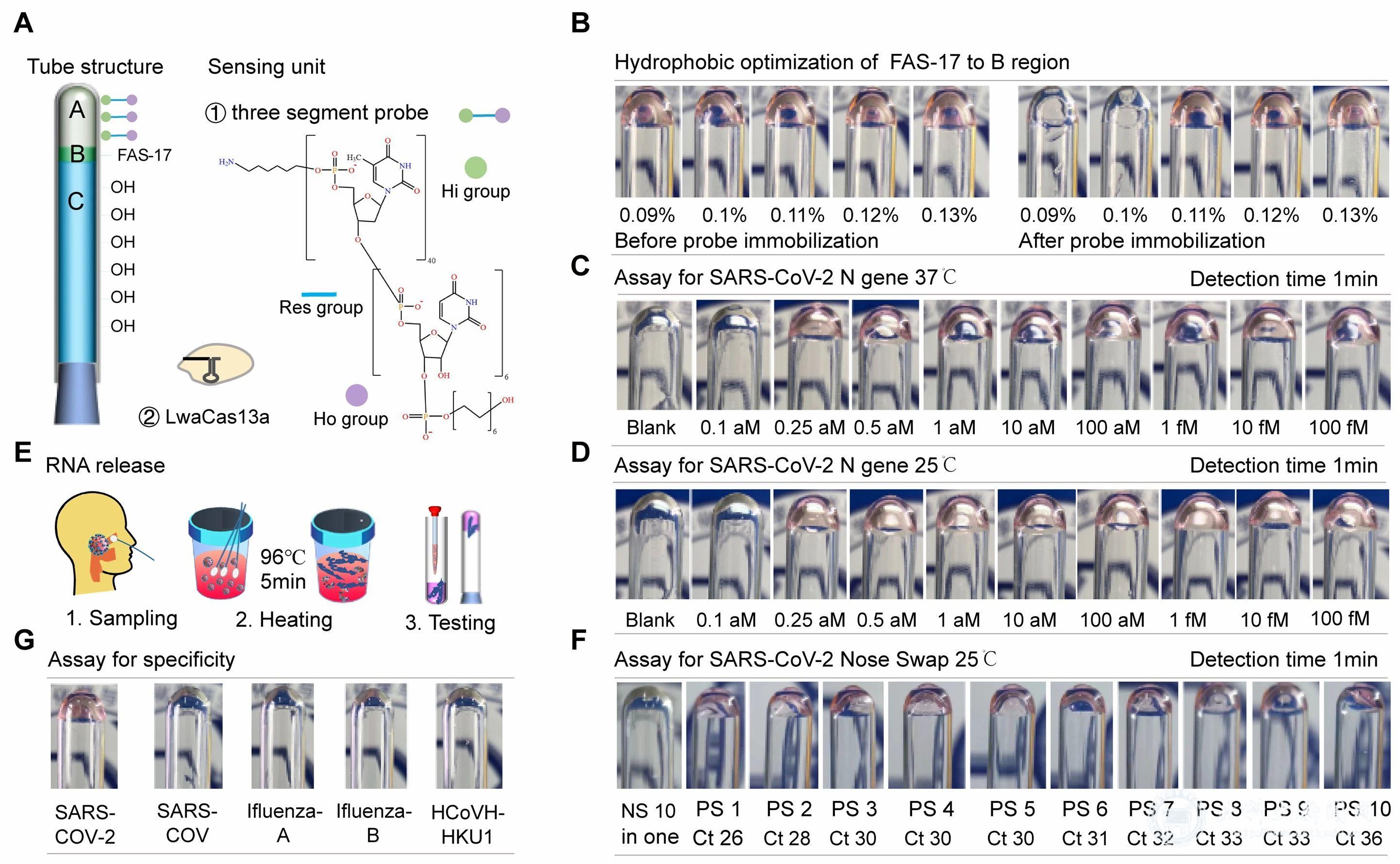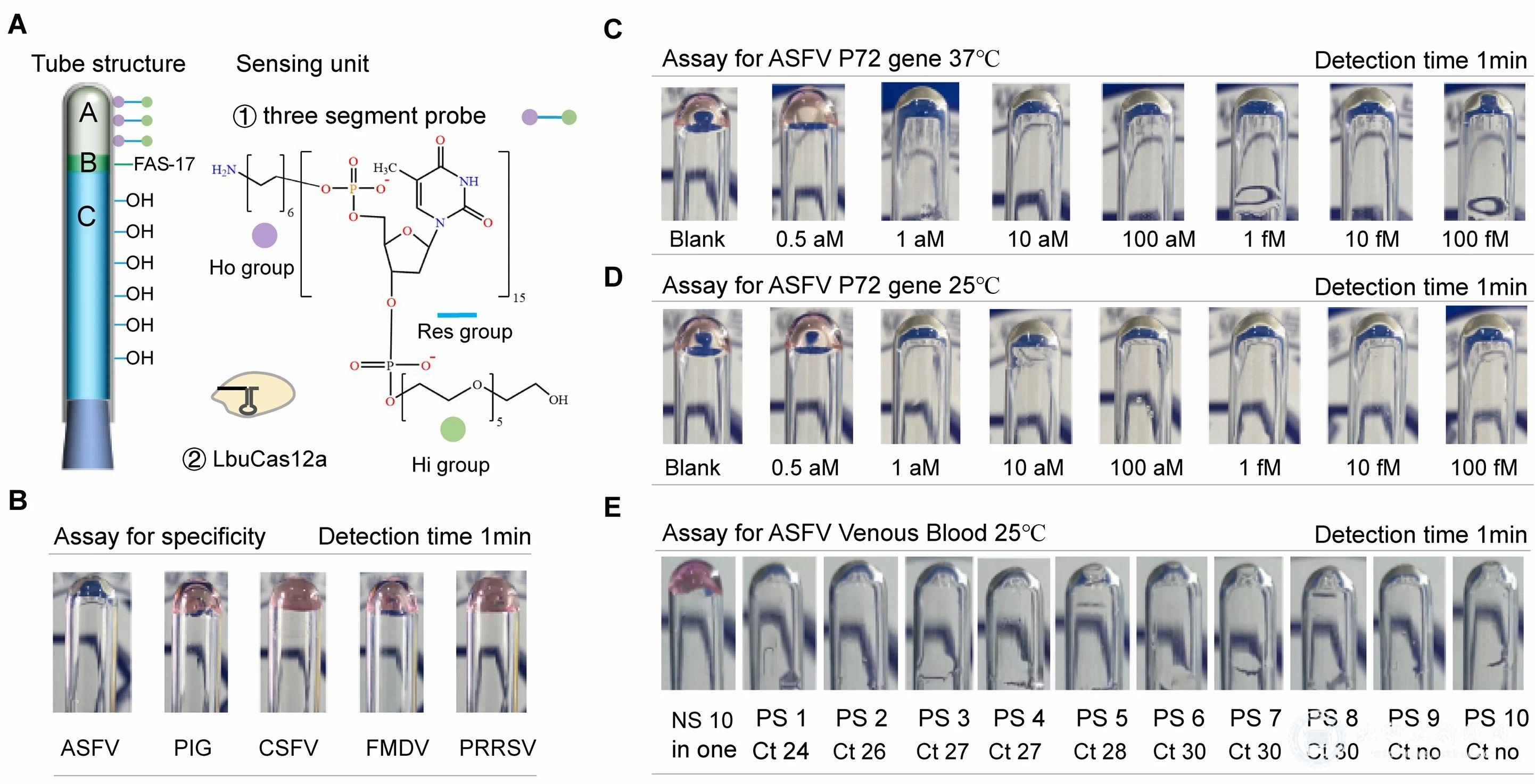USTB is committed to building itself into a high-level research-oriented university
which attaches importance to novel scientific research and promotes independent innovation.
Recently, Professor Zhengping Li’s research team from the School of Chemistry and Biological Engineering published an important research article in Science Advances. Their study explored the detection mechanisms and signal readout models of biosensors, breaking through the long-standing “sensitivity–cost–portability” triangle challenge in pathogen nucleic acid detection. The University of Science and Technology Beijing is the sole corresponding affiliation for this paper. Young faculty member Dr. Yang Bo and Ph.D. candidate Liu Kai are co-first authors.

USTB Sensing Mechanism and Sensing Mode
Research Article
A tube-based biosensor for DNA and RNA detection
Science Advances, Vol. 11, No. 23 (2025)
Research Background and Significance
Diseases caused by pathogenic infections, especially large-scale epidemics, pose a serious threat to human health. Rapid pathogen nucleic acid detection is critical for timely diagnosis and epidemic control. However, traditional detection technologies face the“sensitivity–cost–portability”dilemma, where improving one parameter often compromises the others.
Professor Li’s team developed a novel ultra-sensitive single-tube biosensor (USTB) that fundamentally addresses this bottleneck. Their innovation integrates the principles of nucleic acid detection and signal readout mechanisms, enabling highly sensitive detection while maintaining low cost and portability. This work has major strategic value for epidemic prevention and clinical diagnostics.
Research Innovation
The team introduced a sensing mechanism based on nucleic acid-triggered surface wettability transformation. By observing liquid movement in an inverted glass tube, they created the USTB biosensor with two working modes:
-Mode 1 (Ho to Hi USTB): Detects the presence of target nucleic acids by observing whether liquid remains at the tube bottom or drops.
-Mode 2 (Hi to Ho USTB): Uses reversed probe positioning to further refine detection specificity.
This dual-mode design leverages CRISPR-Cas systems (Cas12a and Cas13a) for DNA and RNA recognition, producing amplified and reliable readouts. The innovative “three-segment probe” design ensures strong specificity and high sensitivity.

The principle and result graph of Ho to Hi USTB's execution of RNA detection for the novel coronavirus
Experimental Results
-The Ho to Hi USTB system achieved DNA and RNA detection within 1 minute, with limits as low as 15 DNA copies/μL and 66 RNA copies/μL.
-Sensitivity exceeded that of commercial RT-PCR kits while maintaining a remarkably low experimental cost of approximately $0.1 per test.
-The platform was successfully applied to the detection of SARS-CoV-2, influenza A, ASFV (African swine fever virus), and other pathogens, demonstrating broad application potential.
These results highlight the biosensor‘s capability to simultaneously achieve ultra-sensitivity, low cost, and portability, breaking through the traditional“three-fold dilemma”of nucleic acid testing.

Hi to Ho USTB's principle and result graph of African swine fever virus DNA detection
Author Profile
Prof. Zhengping Li is a professor at the School of Chemistry and Biological Engineering, University of Science and Technology Beijing. He has received support from:
-The Ministry of Education“New Century Excellent Talent Support Program”(2006)
-The Ministry of Education“Innovation Team Development Plan”(2012)
-National Natural Science Foundation of China (Key Projects, 2016 & 2023)
Prof. Li has led more than 20 major research projects and published 195 papers in high-impact journals, including Science Advances, J. Am. Chem. Soc., Angew. Chem. Int. Ed., ACS Nano, ACS Sensors, Chem. Sci., and Anal. Chem..